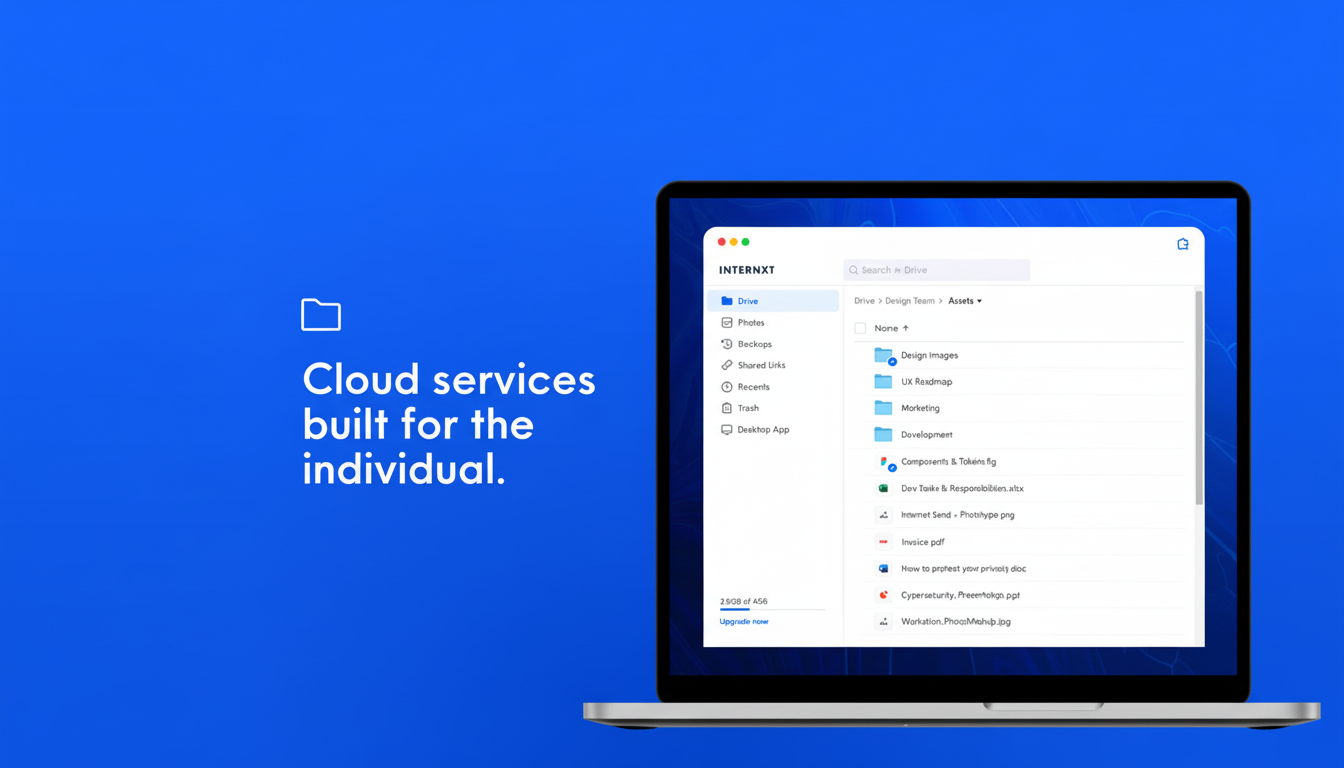One-time cloud storage deals are a rarity, but privacy-focused Internxt is promoting lifetime access to 50TB for just $699.99—full payment only, so there aren’t any pesky monthly fees that quickly balloon your bill.
It’s a compelling alternative to the subscription treadmill, specifically for heavy shooters, media makers, and small businesses.
- What 50TB Really Gets You in Photos and Video Storage
- How the Lifetime Price Compares to Major Cloud Plans
- Security and Privacy Claims in Perspective
- Apps, Sharing, and Everyday Use on Desktop and Mobile
- Who Should Consider It for Long-Term, Large Backups
- The Fine Print to Look At Before Buying Lifetime Storage

What 50TB Really Gets You in Photos and Video Storage
Fifty terabytes is a huge number for just about anyone. In real terms, that’s about 50,000 GB. If you figure an average of 4 MB per photo, that works out to 10–12 million photos. For video, the spectrum is pretty broad: at 100 Mbps (typical for high-quality 4K), one hour will use about 45 GB, so a 50 TB drive can hold around 1,100 hours. If you archive 60–100 GB Blu-ray remuxes at 4K, you could fit around 500–800 films. The catch: 50 TB is more than enough headroom for high-res, long-term media.
That capacity, in turn, opens the door to full-device backups, large research data sets, or multi-year project archives without regularly pruning. IDC has said time and again that worldwide data creation is growing exponentially. The Global DataSphere is expanding awfully fast—by double digits—in fact, locking in this much headroom can future-proof your workflow as file sizes grow.
How the Lifetime Price Compares to Major Cloud Plans
High-end cloud plans are really quite costly at scale. Google One’s 30 TB plan costs $149.99 a month; that’s approximately $1,800 a year for 30 TB of storage, and there is no consumer tier for 50 TB of cloud storage space beyond free tiers. Apple’s iCloud+ is available up to 12 TB for $59.99 per month. At the individual level, Dropbox’s plans won’t even sniff 50 TB without venturing into business pricing. Given that backdrop, the math on a one-time $699.99 for 50 TB is the kind of math buyers can relate to: about what you’d spend in a few months on certain high-capacity subscriptions.
Clearly, the trade-off is liquidity and risk. Subscriptions help distribute costs and can be turned off. Lifetime access requires more of an upfront commitment but could pay for itself fairly quickly if you require ongoing, large-scale storage.
Security and Privacy Claims in Perspective
Internxt sells a zero-knowledge, end-to-end encrypted model—where files are encrypted client-side and sliced so that only the account holder has readable access to them. That’s the gold standard that many privacy advocates want, consistent with Cloud Security Alliance advice that recommends minimizing how much a provider sees about the data of its users. It is also a powerful differentiator from services that index or scan content for features.
You’ll also see “post-quantum” language in the marketing. It’s worth reading the technical documents carefully. NIST has standardized post-quantum cryptography modes like CRYSTALS-Kyber and Dilithium, but consumer deployment is sparse. If you need quantum resistance, you will also want to check which schemes are already supported and how smart cards can be distributed.
Apps, Sharing, and Everyday Use on Desktop and Mobile
As for usability, with Internxt you can use apps on Windows, macOS, Linux, iOS, and Android—as well as a web interface.
Anticipate basics like folder sync, direct links, and permissioned sharing for collaborators. High-capacity clouds succeed or fail based on their upload reliability, so it doesn’t matter how much raw storage you have if you aren’t able to seed the new account with speed and then background resume and mobile auto-upload photos and video.

If you need to move tens of terabytes, expect time as a requirement: on the speediest home internet connection available in the United States (fiber) with an upstream rate of 500 megabits per second, 50 TB would require more than nine days of nonstop uploading if everything goes perfectly.
A lot of people seed slowly or with important archives first.
Who Should Consider It for Long-Term, Large Backups
Photographers, filmmakers (and their drone pilots), podcasters, and YouTubers shooting 4K or 8K footage are a no-brainer. So are small studios and nonprofits for which long-term retention without surprise bills is crucial. So are families who desire a single, privacy-focused vault for each phone and laptop.
Still, consider the cloud just one leg of a 3-2-1 backup plan—three copies of your data on two different media, with one of them offsite—long favored by both data protection professionals and U.S. cybersecurity agencies. And a lifetime cloud vault with local NAS or external drives could be insured against account lockouts and regional outages.
The Fine Print to Look At Before Buying Lifetime Storage
“Lifetime” usually refers to the lifetime of the service, not your own. Look for terms regarding any fair-use caps, bandwidth throttling, file size limits, and account inactivity. Clarify data residency, because some providers are based largely in the EU for privacy reasons, as well as what options you have if they would ever need to move your whole library.
Finally, prices and promotions can change. Like any major tool you’ll build a workflow around, it’s wise to audit the roadmap, support posture, and security disclosures, and to test drive uploads and restores before delivering your crown jewels.
Bottom line: If you’re sick of juggling monthly bills and keep needing more space, Internxt’s lifetime 50 TB offer is in a league of its own when it comes to capacity per dollar.
Do the diligence, map it to a good backup strategy, and it could represent the last storage upgrade you’ll make in quite some time.

